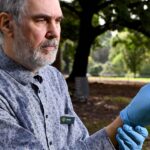
Image source: Getty Images
When I retire, I plan to top up my State Pension by generating a rising passive income from FTSE 100 dividend shares. I invest in UK shares whenever I have the cash to do so, and now I’m going flat out because I think it’s a brilliant time to buy them.
Inflation has plagued stock markets for more than two years now but when we finally see signs that interest rates have peaked, I expect a serious recovery. I’m keen to buy shares before that happy day arrives, while they’re still cheap and dividend yields are high.
If I was lucky enough to have £25,000 of spare cash today, I’d be sizing up my targets in preparation for a late summer splurge.
I’d buy cheap high-yielders
I’d be looking to buy shares like housebuilder Taylor Wimpey, insurer Legal & General Group and wealth manager M&G, which currently yield income of 8.6%, 9.1% and 10.6% a year, respectively. This is far more than any cash savings rate, plus there’s potential for share price growth when markets recover.
Dividend income, unlike interest on cash, isn’t guaranteed. Companies may have to cut shareholder payouts if the cash flows don’t keep up. I’d reduce the risks by building a diversified portfolio of at least a dozen FTSE 100 shares. Over time, I’d hope my income would steadily rise, as companies look to increase their dividends every year.
I reckon it’s possible to generate a passive income stream of almost £12,000 a year, from my initial £25,000. It won’t happen overnight though.
The key to making money from FTSE 100 dividend stocks is to buy when they’re cheap (as they are today), and hold for the long term. I’ll reinvest all my dividends straight back into my portfolio, until I’m ready to draw them as income in retirement.
Since the 1980s, the FTSE 100 has delivered an average annualised total return of 8% a year. If I match that, in 25 years my £25,000 will have grown to a pretty nifty £171,212. If my portfolio yields 7% a year at the time, that would give me income of £11,985 a year. Which isn’t a bad return on my original £25,000.
Beat the ups and downs
This is a bit of a back-of-an-envelope calculation, of course. My portfolio could grow slower than 8% a year, or it could rise faster. It all depends on the stocks I choose. As I said, dividends are never guaranteed, so I may not get that 7% yield. But I might get more.
Stock markets can be volatile and if they crash just before I retire, that could reduce my income. Yet I think the underlying principle holds good. By purchasing UK blue-chips and holding them for decades, my capital and income should compound and grow over time.
There’s no time to lose. Over a shorter timescale of 15 years, my £25,000 would compound to just £79,304, less than half as much. That would give me income of £5,551 a year (all other factors being equal).
That’s still a pretty good return but what I’d hope for. So it pays to start investing today in order to generate the biggest possible passive income stream tomorrow.








